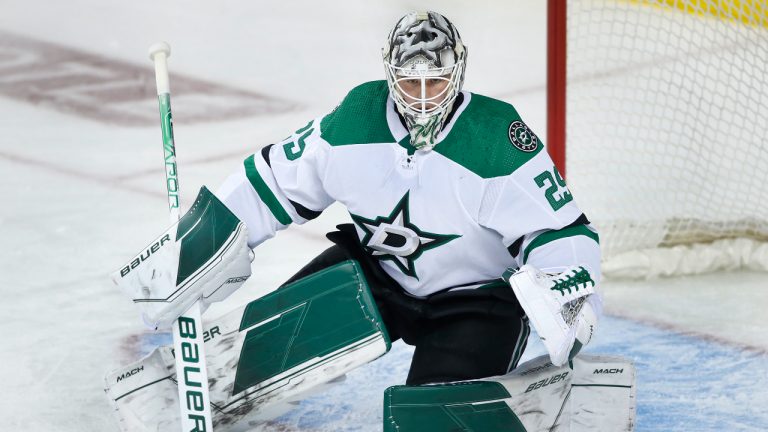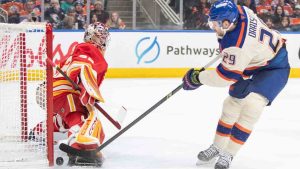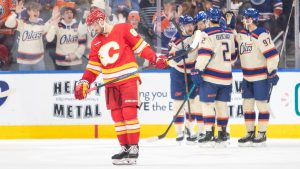When we talk about teams who have already been eliminated from Stanley Cup contention, we tend to focus on the bad: what went wrong for this team to lead to their demise, what went right for the winning squad and how they managed the challenge that the losing team posed.
Ultimately, that losing team’s season did end — and that should be the point of discussion. But we can still highlight bright spots in their playoff runs. Specifically, we can highlight the players that stood out among the rest.
Rather than looking at veterans that we know come to play in the post-season, or pretend to be shocked at elite players who were elite come playoff time, we’re focusing on some newer faces around the league who rose to the occasion on the biggest stage the NHL has to offer.
Let’s dive in.
Jake Oettinger, Dallas Stars
The Flames were heavy favourites in Round 1, and rightfully so. While they came away as winners in that series, maybe the biggest winner of all was Oettinger. The fact that it took Calgary seven games to advance is a massive credit to the Stars’ goalie, who held his team in this round longer than most probably anticipated.
In all situations in Round 1, based on the shot quality Calgary generated, Oettinger faced 24.4 expected goals. But thanks to his outstanding play between the pipes, he saved 11.4 more goals than expected. Goals saved above expected is a counting stat that just accumulates over time as play goes on, increasing with positing outstanding and dipping with negative.
That’s what makes it all the more impressive that the netminder still sits second in playoff GSAx despite only playing seven games. The only goaltender higher is Igor Shesterkin at 17.7.
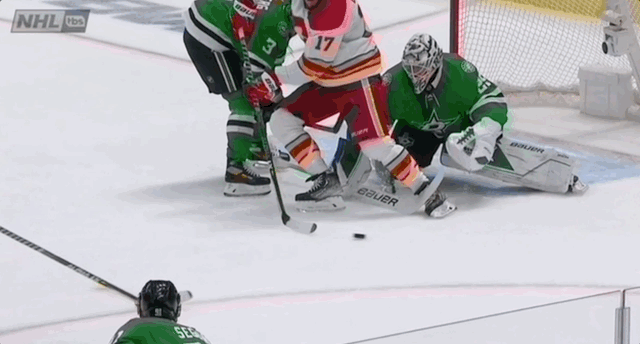
Oettinger ran with the starter’s net in the second half of the season, and played a pivotal role in helping Dallas even reach the post-season. But his playoff performance was next level, and only solidifies that he’s a player to watch next season.
Seth Jarvis, Carolina Hurricanes
When most think of Jarvis this post-season, they probably think of how his year ended: a hit from Jacob Trouba that had ripple effects within the game and caused a concussion. That was an impactful, series-changing sequence that without question warrants attention. But so does his play leading up to that point.
Jarvis net 40 points in 68 regular-season games, and really stood out while skating alongside some of the team’s best in Sebastian Aho and Teuvo Teravainen. Together they played about 200 minutes and earned a 61.3 per cent expected goal rate at even strength.
In the playoffs, he spent time with that combination — putting up an even stronger 70.5 per cent expected goals rate, and time with the centre and Andrei Svechnikov (who helped the team generate 63 per cent of the expected goals share in about 71.5 minutes).
Along with tallying eight points, Jarvis kicked in a number of scoring chances at 5-on-5 — 24 shot attempts, to be exact, 15 of which went on net, and two that crossed the goal line.
The rookie led his team in scoring chances, rush attempts (seven), and slot shots off the cycle (10th). And he had two goals to show for those cycle shots. Plus Jarvis contributed to his team’s offence with his puck movement to the quality areas of the ice. It was a very promising start to his NHL career.
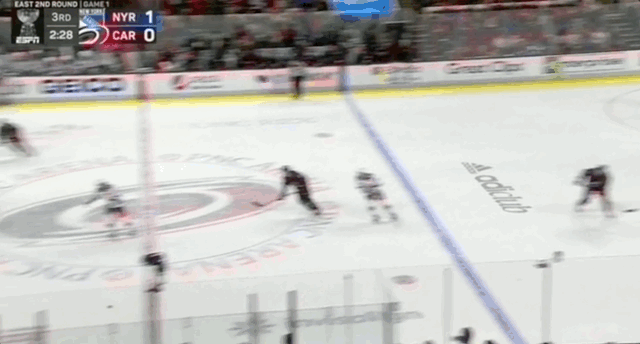
K’Andre Miller, New York Rangers
Ahead of the playoffs, Miller was one of the best Rangers in the second half of the season. While Round 1 had its challenges, seeing as him and partner Jacob Trouba were tasked with trying to contain Sidney Crosby’s line while Ryan Lindgren was sidelined, the playoffs still had quite a few highlights for the second-year defenceman.
At 5-on-5, he leads all skaters in loose puck retrievals across all three zones in the post-season, with a major chunk coming back from his own zone. Miller’s long reach plays a key role in his ability to recover loose pucks and win battles under pressure.
That reach, along with his strong skating stride, helped him break up dangerous plays in his own zone to try and ease his goaltender's workload. He earned a league-leading 44 stick checks at 5-on-5, with 33 coming back in the defensive end. The defender also stands third with 53 blocked passes in the defensive zone, and holds that ranking among all three zones with 90 blocks altogether.
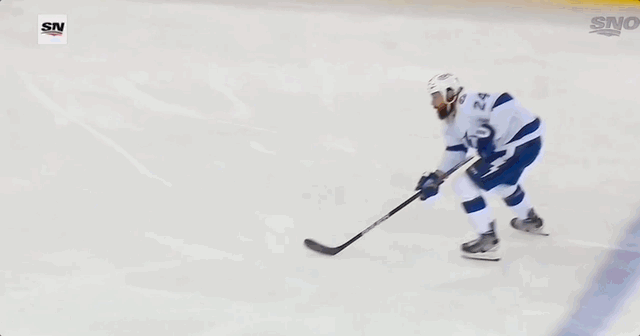
The skills that make him so successful in his own zone started to shine in the offensive zone later in the regular season, and at points in the playoffs as well — whether it was his ability to break out with possession or hold the blue line to extend possession time. The skater who converted from forward to defence before his NHL career is a special player, and the growth in his game from his second NHL season translated to the post-season environment.
Data via Sportlogiq
